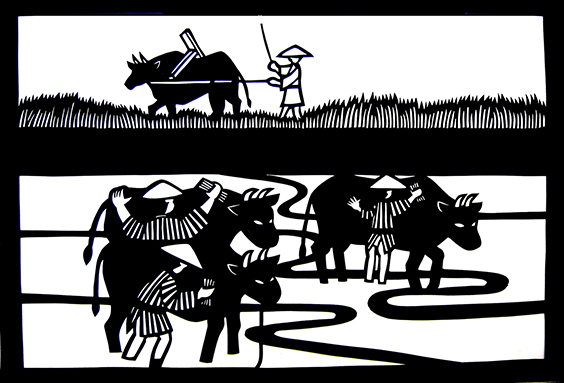子どもの
幸せを
祈って、
家に
鯉のぼりを
飾ったり、
柏餅を
食べたりします。
We display carp streamers at home and eat Kashiwa-mochi to wish for the happiness of our children.
、
ある村では、1
月7
日、3
月3
日、5
月5
日、7
月7
日、9
月9
日の5
日を「
節句」と
言って、
村の
人たちが
集まってお
祝いをしていました。
Long ago, in a certain village, January 7th, March 3rd, May 5th, July 7th, and September 9th were called Sekikiku, and the villagers would gather to hold festivals.
5
月5
日は「
牛の
節句」と
言って、
牛を
休ませてお
祝いする
日でした。
May 5th is called Day of the Ox, a day to celebrate and let oxen rest.
の
若者は、
牛を
休ませないで、
田んぼの
仕事をさせました。
However, the young people of the village still made the oxen work in the rice fields without letting them rest.
の
人たちは「
牛を
休ませなさい」と
言いましたが、
若者は「
自分のしたいようにする」と
言いました。
The villagers said, Lets let the cows rest, but the young people said, Well do it our way.
とき、
田んぼに
水が
たくさん出てきて、
若者も
牛も
水の
中に
落ちてしまいました。
At that moment, the rice field overflowed with water, and both the young man and the ox fell into the water.
の
人たちは
びっくりしましたが、
若者の
お父さんは「
少しはわかるだろう」と
言って、
助けようとしませんでした。
The villagers were very surprised, but the young mans father said, Im sure hell understand at least a little, and did not try to help him.
は
泳いで
水から
出てきました。
The cow swam out of the water.
は
牛の
しっぽにつかまっていました。
The young person is clinging to the cows tail.

